East African shellac series – History
Commercial recordings of East African music began in 1928 when His Master’s Voice’s branch in Bombay, India (today Mumbay) dispatched an engineer to Mombasa, Kenya. The recordings session with Siti binti Saad, Maalim Shaban and others resulted in 56 records released by His Master’s Voice later that year. The sale proved so successful that a second and third session was organized the following years. The sessions generated a total of 71,519 records sold up to June 1931.
In 1928 the British Zonophone label, owned by The Gramophone Company / His Master’s Voice, also released a number of shellacs recorded in London with lyrics in KiSwahili and Somali as part of its principal African E.Z. series.
The commercial potential of the East African market attracted other European labels as well. The British Columbia label, German Odeon and French Pathé all started recording in 1930. Columbia made reccordings of Mombasan and Zanzibari artists in Dar-es-Salam released in the WE series. Odeon made recordings in Kampala and Mombasa, including Siti binti Saad, whereas Pathé sailed its recording artists to Marseille, which resulted in the Pathé X 79000 series.
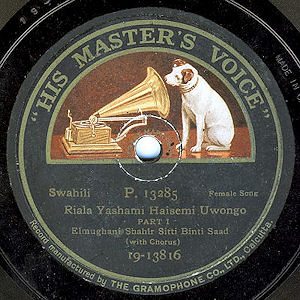 |
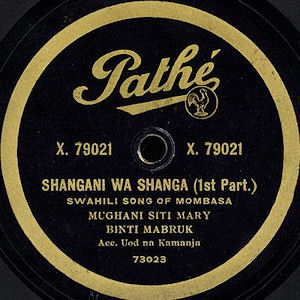 |
| HMV – manufactured in India | Pathé 1930 Marseille session |
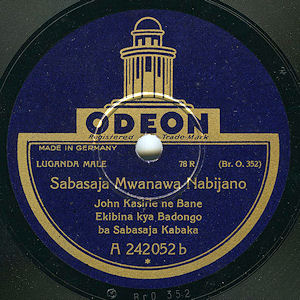 |
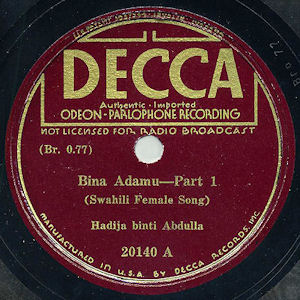 |
| Odeon 1930 session | Odeon 1930 session – USA re-release |
 |
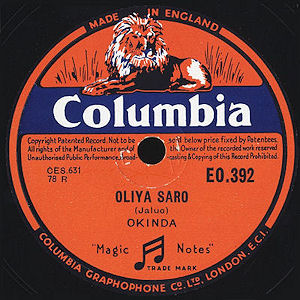 |
| Columbia 1930 session | Columbia 1937 session |
The first half of the 1930s was marked by the depression and the merger of His Master’s Voice, Columbia, Odeon and Pathé into one company, EMI. It should take several years to 1937 before new recordings were released on the Columbia label in the EO series. World War II again brought a halt to new recordings which were resumed in the late 1940s and continued throughout the 1950s. The new releases on the Columbia label continued in the EO series and in the MA series on His Master’s Voice. In 1956 His Master’s Voice introduced the AMC series on a blue label on the initiative of Peter Colmore, a former British officer who served in East Africa during World War II in charge of a unit entertaining the troops. After the war he had worked for the broadcasting service in Kenya and organized many variety shows with East African artists. Approximately 250 records were released in the AMC series, including the Congolese guitarist Edouard Masengo.
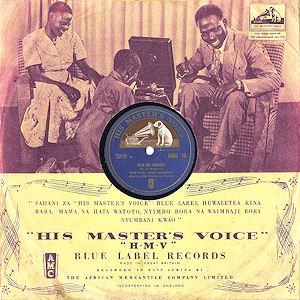 |
 |
In the late 1940s East African Sound Studios Ltd. with its label Jambo Records was the first independent company to challenge the monopoly held by the EMI labels. Initially some 300 releases were manufactured for the company by Decca in the U.K. In 1952 it was taken over by the Afcot company and a pressing plant, East African Records Ltd., was established in Nairobi. That same year Gallo in South Africa introduced a catalogue with East African recordings based on Hugh Tracey’s recording tours, including the Congolese guitarist Mwenda Jean Bosco. In 1956 the German von Opel started a pressing plant in Kampala and began to release on the Tom-Tom label. Both East African Records Ltd. and and the Opel Gramophone Record Factory Ltd. also served the growing number of independent labels that emerged in the 1950s. By 1957 some 49 record labels were available on the East African market.
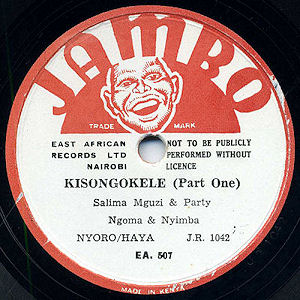 |
 |
 |
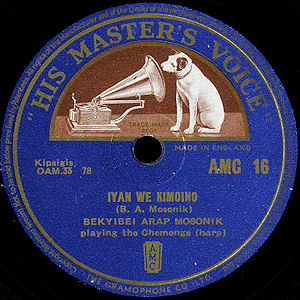 |
One of the major independent labels was Mzuri Records, owned by Assanand & Sons Ltd. in Mombasa. By the early 1960s approximately 570 shellacs had been released on the Muzuri label in the AM series, some manufactured in West Germany. Another 260 shellacs appeared in the Mzuri HL series. Other major independent labels included the Capitol Music Store on the CMS label; African Gramophone Store on the AGS label and Associated Sound Ltd. on the ASL label. According to Werner Graebner (personal communication) the East African labels continued to release shellac discs into the late 1960s before they were eventually phased out in favour of the new 45 rpm vinyl discs. Some 600 shellac discs had been released by Jambo Records before the label and the old pressing plant was sold to the South African producer Charles Warrod, who soon disposed of the presing plant. East African Records Ltd. ended up with Philips/ Polydor/Polygram and was refitted with new vinyl presses that served the booming East African record marked from the 1960s into the 1980s.
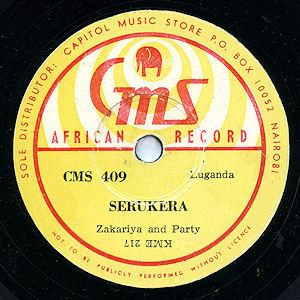 |
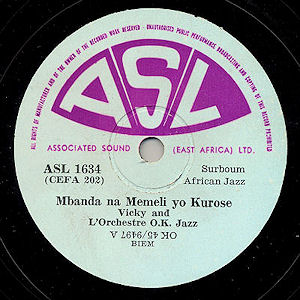 |
Ken-Tanza website
The Ken-Tanza website lists more than 6,000 45 rpm vinyl singles released on 566+ East African labels. LINK
Reference
Werner Graebner:
The First 35 Years of Commercial Recording in East Africa, 1928-1963.
Processes of institutionalization (some preliminary research findings).
Research Paper. Institute of African Studies, University of Nairobi, [Draft version], 1989. 23 pp.
Flemming Harrev:
Jambo Records and the Promotion of Popular Music in East Africa.
The Story of Otto Larsen and East African Records Ltd. 1952-1963.
in: Wolfgang Bender (ed.): Perspectives on African Music. Bayreuth African Studies Series (Bayreuth),
No. 9, 1989: 103-137.
Paul Vernon:
Feast of East. Delvings into the History of World Music Recording Touches Down in East Africa.
Folk Roots (London), No. 145 (Vol. 17, No. 1), July 1995: 26-27 & 29.

Compilation albums
A few compilation albums have emerged with a selection of the recordings of East African music originally released on 78 rpm shellac discs. In 1998 Pat Conte had a compilation released on the Yazzo label based on his private collection, The Secret Museum of Mankind. Janet Topp Fargion from the National Sound Archive, British Library in London made a selection based on the archive’s collction that was released on Topic Records in 2007. In 2010 Honest Jon’s Records released a dobble album with 35 tracks compiled by Mark Ainley based on the shellacs held by The EMI Archive Trust.

Yazoo 7105 P1998
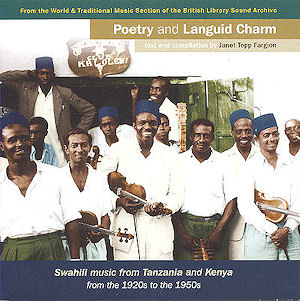
Topic Records TSCD 936 P2007
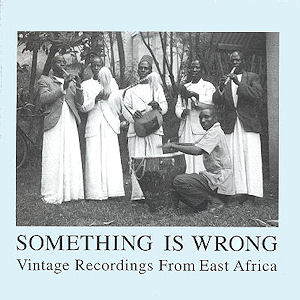
Honest Jon’s Records HJRCD50 P2010

– also released as two sets of vinyl albums
(2 LP albums each) HJRLP50-1 and HJRLP50-2
Page created 20/05/2013 © Flemming Harrev – latest update 25/05/2013
